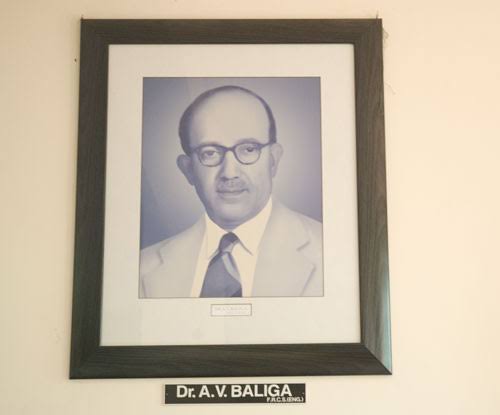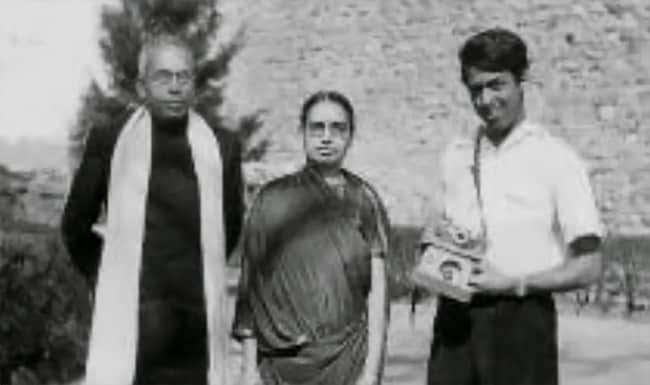
Beijing got what it wanted: the omission of Demchok pass in the Treaty, (leaving the door of Aksai Chin open), the removal of the last Indian jawans from Tibet, the surrender of Indian telegraphic lines and guest houses, but first and foremost the Indian stamp of approval on 

their occupation of Tibet.
The Nehru Government through this exchange handed over all advantages accrued from the Simla Convention. India would not ask for nor get anything in return, not even the confirmation of the McMahon line.
In school, we studied Nehru’s #Panchsheel
The Nehru Government through this exchange handed over all advantages accrued from the Simla Convention. India would not ask for nor get anything in return, not even the confirmation of the McMahon line.
In school, we studied Nehru’s #Panchsheel

agreement & how it brought India and China closer and the popular phrase Hindi-Chini Bhai Bhai.
Reality ?
Do Read How Nehru Lost India & Tibet On This Day In 1954.
Copied from Tibet – The Lost Frontier by Claude Arpi.
The “Agreement on Trade and Intercourse between the Tibet
Reality ?
Do Read How Nehru Lost India & Tibet On This Day In 1954.
Copied from Tibet – The Lost Frontier by Claude Arpi.
The “Agreement on Trade and Intercourse between the Tibet
region of China and India” was signed on 29th April 1954 in Beijing by the Indian Ambassador N. Raghavan and Chang Han-fu, the Chinese Deputy Foreign Minister of China. It is remembered as the Panchsheel Agreement.
During a speech on the occasion of the signing, Zhou Enlai
During a speech on the occasion of the signing, Zhou Enlai
reiterated that the questions which were “ripe for settlement have been resolved”.
The subtleties of Zhou disturbed very few in Delhi, though before the Conference some diplomats such as Sir Girja Shankar Bajpai, had strongly advised that India should force Beijing to recognize
The subtleties of Zhou disturbed very few in Delhi, though before the Conference some diplomats such as Sir Girja Shankar Bajpai, had strongly advised that India should force Beijing to recognize
the traditional boundary between India and Tibet as the only way to resolve all the outstanding questions between India, China and Tibet.
The same day, through an exchange of letters, India gave up her ‘extra territorial’ rights in Tibet such the military escorts in Gyantse and
The same day, through an exchange of letters, India gave up her ‘extra territorial’ rights in Tibet such the military escorts in Gyantse and
Yatung; post offices, telegraph and telephone services and 12 rest houses.
During the following years, the same refrain would often be repeated: “The Government of India found the old advantages of little use and in any case the Chinese exercised full control in Tibet.”
During the following years, the same refrain would often be repeated: “The Government of India found the old advantages of little use and in any case the Chinese exercised full control in Tibet.”
But there is another side to the coin. For many years the so-called ‘colonial’ agreement on Tibet (i.e. the Simla Convention) had provided protection to the Land of Snows against an expansionist Eastern neighbour. It had allowed this nation to survive with complete internal
autonomy. In 1954, the same nation was not even informed about the Agreement. Indeed, the Panchsheel Agreement was no less ‘colonial’ in nature than the treaties forced by the British on smaller nations without their knowing it.
The title of the Agreement itself was a major
The title of the Agreement itself was a major
victory for the Chinese side. From an independent State, Tibet had become ‘Tibet’s Region of China’ in the new Agreement.
The Chinese historian Tieh-Tseng Li summed up the situation:
“Indeed, the status of Tibet was clearly defined in the ‘Peking Agreement on Measures for the
The Chinese historian Tieh-Tseng Li summed up the situation:
“Indeed, the status of Tibet was clearly defined in the ‘Peking Agreement on Measures for the
Peaceful Liberation of Tibet’;but the external aspect of the issue remained to be settled. India gave a tacit consent to the situation created by this agreement. …India accepted the principle that Tibet constitutes an integral part of China.”
What were the concessions offered
What were the concessions offered
by Chang ‘to his Indian friends’?
The preamble was merely a postmortem sermon for Tibet as an independent State. During the following months, this innocuous agreement dealing with trade and travel regulations with Tibet became the new mantra of Indian diplomacy. Some politicians
The preamble was merely a postmortem sermon for Tibet as an independent State. During the following months, this innocuous agreement dealing with trade and travel regulations with Tibet became the new mantra of Indian diplomacy. Some politicians
believed that the amazing Five Principles would solve all the problems in the relations between developing and non-aligned nations of the world.
How many in India realized the ironical paradox of these precepts which triggered the virtual disappearance of a nation which itself
How many in India realized the ironical paradox of these precepts which triggered the virtual disappearance of a nation which itself
had traditionally practiced these five principles? Tibet, the non-violent nation par excellence had not only preached peaceful co-existence, mutual respect, equanimity, non-interference, but had spread these precepts as far as China, Manchuria, Mongolia and Siberia.
On May 15,
On May 15,

1954, Nehru presented the Agreement to the Indian Parliament and said
“The only country that had more intimate relations with Tibet was India, that is to say, British India in those days. Even then, when it was British policy to have some measure of influence over Tibet, even
“The only country that had more intimate relations with Tibet was India, that is to say, British India in those days. Even then, when it was British policy to have some measure of influence over Tibet, even
then they never denied the fact of Chinese sovereignty over Tibet, although in practice it was hardly exercised and they laid stress on Tibetan autonomy.”
Once more, he reiterated that the most important feature of the Agreement was not the fate of the Tibetans, but the ‘wider
Once more, he reiterated that the most important feature of the Agreement was not the fate of the Tibetans, but the ‘wider
implications’. Unfortunately, for India, the loss of her natural buffer zone with China was indeed to have even ‘wider’ implications.
It did not occur to Nehru to ask the most interested party, the Tibetans, who most likely would have preferred to live with a couple of hundred
It did not occur to Nehru to ask the most interested party, the Tibetans, who most likely would have preferred to live with a couple of hundred
Indian jawans rather than with tens of thousands of soldiers of the ‘Liberation Army’.
In the same speech Nehru spoke about Agreement Panchsheel: “Live and let live, no one should invade the other, no one should fight the other… this is the basic principle which we have put in
In the same speech Nehru spoke about Agreement Panchsheel: “Live and let live, no one should invade the other, no one should fight the other… this is the basic principle which we have put in
our treaty.”
During the debate which followed, most of the members from the Congress and the Communist Party were enthusiastic in their endorsement of the agreement.
Acharya Kripalani strongly attacked the Nehru's policy: “It affects us all and we have to say something about it.
During the debate which followed, most of the members from the Congress and the Communist Party were enthusiastic in their endorsement of the agreement.
Acharya Kripalani strongly attacked the Nehru's policy: “It affects us all and we have to say something about it.
We feel that China, after it had gone Communist, committed an act of aggression against Tibet.”
Kripalani went on to mention that new maps printed in China showed Nepal, Sikkim, etc. as part of China and he concluded: “In International politics when a buffer state is abolished
Kripalani went on to mention that new maps printed in China showed Nepal, Sikkim, etc. as part of China and he concluded: “In International politics when a buffer state is abolished
by a powerful nation that nation is considered to have aggressive designs on its neighbours.”
Nehru summed up the debate by saying “in my opinion, we have done no better thing than this since we became independent. I have no doubt about this. I think it is right for our country,
Nehru summed up the debate by saying “in my opinion, we have done no better thing than this since we became independent. I have no doubt about this. I think it is right for our country,
for Asia and for the World”.
It took less than two months for India to discover that all problems had not been settled. The first Chinese incursion in the Barahoti area of Uttar Pradesh occurred in June 1954. This was the first of a series of hundreds of incursions which
It took less than two months for India to discover that all problems had not been settled. The first Chinese incursion in the Barahoti area of Uttar Pradesh occurred in June 1954. This was the first of a series of hundreds of incursions which
• • •
Missing some Tweet in this thread? You can try to
force a refresh










